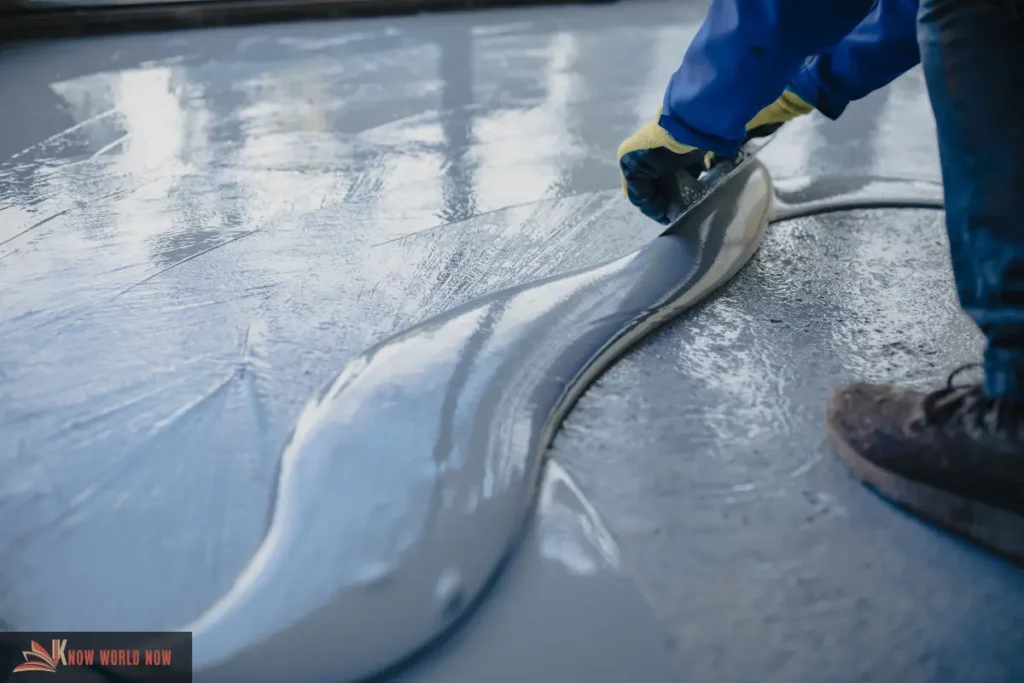You’re standing in a home improvement store, staring at a wide array of floor coatings, wondering which one to choose. Two options stand out: epoxy vs polyaspartic. Both are popular choices, but how do you decide which one is the better fit for your needs?
We’ve got you. Understanding the key differences between these two can help you in choosing the right option.
So, let’s dive into the world of epoxy and polyaspartic flooring and uncover what sets them apart.
Notably, epoxy flooring has exceptional resilience. It can effectively withstand heavy foot traffic, chemical spills, and the wear and tear of daily activities.
What Is Epoxy Flooring?
Epoxy flooring has been around for several decades and has become a go-to option for many homeowners and businesses alike. It’s made by mixing epoxide resin with a polyamine hardener. This results in a thick, durable plastic-like substance that can be applied as a coating on concrete floors.
Epoxy surface coatings come in different colors. They can also be combined with decorative elements like flakes or metallic pigments for a customized finish.
What Is Polyaspartic Flooring?
Polyaspartic flooring is new in the flooring industry, having been developed in the 1990s by Bayer Material Science. It’s derived from a similar chemical family as epoxy- polyurea- but has a few key differences.
It’s a two-component product that’s typically applied to concrete floors as a topcoat. It offers a glossy finish and high resistance to chemicals and abrasion. To learn more about it, you can check out this article.
Key Differences
The main flooring differences between the two floorings can be broken down into four categories:
Cure Time
When it comes to curing time, polyaspartic flooring has the upper hand. It can cure in just a few hours, compared to the 24-48 hours that epoxy requires. This makes polyaspartic a better option for time-sensitive projects and areas with high foot traffic.
Application
Both epoxy and polyaspartic flooring require proper surface preparation before application. However, polyaspartic can be applied in a wider range of temperatures (from -30°F to 140°F) compared to epoxy (50°F to 90°F). This makes polyaspartic a better choice for outdoor projects or areas with extreme temperature fluctuations.
Durability
Both floorings are highly durable, but polyaspartic takes the lead in chemical and abrasion resistance. It also has excellent UV stability, making it a better option for outdoor applications.
Cost
Epoxy flooring tends to be more cost-effective compared to polyaspartic. While the upfront costs may be similar, epoxy has a longer lifespan. It requires less frequent maintenance, making it a more budget-friendly option in the long run.
Epoxy vs Polyaspartic: Which One Should You Choose?
The decision between epoxy vs polyaspartic flooring boils down to your specific needs. If you’re looking for a quick cure time, high chemical resistance, and UV stability, polyaspartic is the way to go. But if cost-effectiveness and a longer lifespan are your top priorities, then epoxy may be the better option.
Whichever you choose, both options offer durable, customizable, and attractive options. So go ahead and make that floor upgrade with confidence!
Did you find this flooring comparison between epoxy and polyaspartic helpful? If so, check out the rest of our site for more.


